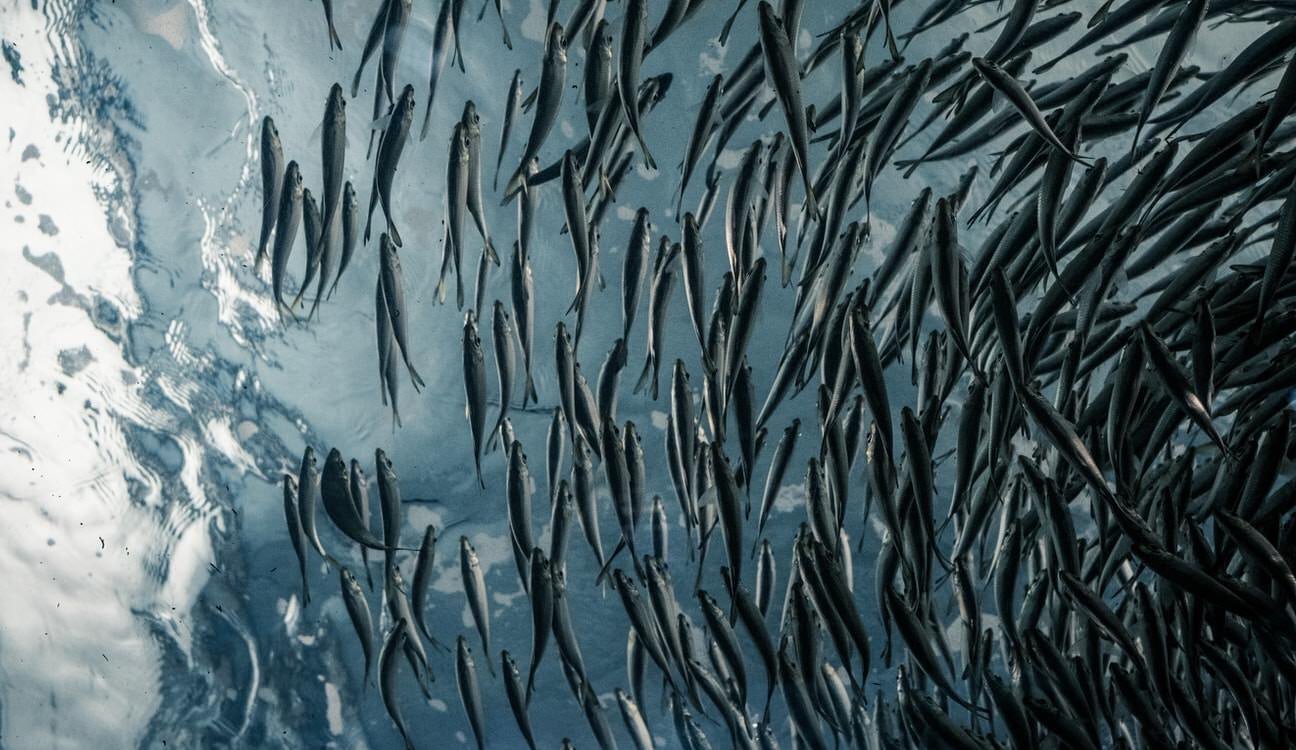
Pollack
Pollack are available all year round in Jersey. In the warmer summer months, they can be found close to the coastline while in the colder months they are found further offshore. In particular they are often found feeding near steep underwater pinnacles and shipwrecks.
IN SEASON
January – December
CATCH METHOD
Netting
ABOUT THE FISH
Pollack
There are two types of these fish species, both of which are closely related to cod and haddock.
Pollack (Pollachius pollachius) comes from the north east Atlantic and is commonly caught off the UK coastline and around the Channel Islands. The FAO (Food and Agriculture Organization of the United Nations) use the English name ‘pollack’ for this species, but it’s also commonly referred to as ‘pollock’.
Pollock (Theragra chalcogramma) originates from the North East Pacific and is often caught off the Alaskan coast. It is in the same family as pollack, however it is part of a different genus and species. Alaskan pollock is more commonly found in UK supermarkets. If you have ever eaten fish fingers, then you will most likely have been eating Alaskan pollock.
Pollack has been known to grow up to 16kg and boasts a white meat, not dissimilar to cod. As a result, you can easily swap in pollack in for any cod recipe.
LOW-IMPACT CATCH METHODS
Netting
Most pollack in Jersey are caught as bycatch in nets used to target bass, known as gillnets. These gillnets are suspended vertically in the water column and a minimum mesh size allows for undersized fish to swim through, while oversized fish ‘bounce off’. As bass fishing is closed during February and March, we rarely see local pollack on our shelves during these months.
Pollack can also be caught via 'wreck fishing’ using rod and line, when fishermen travel by boat and position themselves above a shipwreck to target specific fish. Given Jersey’s many wrecks, this form of fishing takes place all around the island.
PREPARATION ADVICE
Preparing Pollack
Once you have your hands on some pollack, filleting it will give you a huge amount of versatility when cooking. You can ask your fish monger to fillet the fish for you, or give it a go yourself! Pollack are an easy fish to fillet.
Slowly run the blade of the knife down the spine of the fish, and carefully remove the fillet off the bone. Once filleted, you can easily remove the skin, so no need to scale the fish!
Here is great video which shows you how to easily fillet and skin a pollack.
If you are cooking pollack whole, it’s important to gut and scale the fish beforehand (unless this has been done for you by the fish monger). Firstly, you will need to scale the fish. Pollack have tiny scales which are very fine and lightweight. These can easily be scraped off by running the back of a knife, along the skin, from the tail towards the head. Repeat until the fish is scale free and then give is a quick rinse to wash off any loose scales. This process can be quite messy, so try scaling the fish under a running tap.
To gut, lay the fish on its side, cutting open the underside by making an incision from the fin to the bottom of the gills.
You can then use a spoon or knife to remove the intestines and gills (you may need to use some scissors to cut away the gills). Lastly, give the empty cavity a good rinse and your fish is now ready to be cooked!
COOKING ADVICE
Cooking Pollack
Pollack is a delicious whitefish which is incredibly versatile. It can be cooked whole, filleted for pan frying, baked, poached, smoked or even battered for deep frying. It’s mild taste lends itself for use in a wide variety of cuisines.
Jamie Oliver has a delicious pollack recipe which is quick, easy and only uses five ingredients!
All you need is some new potatoes (Jersey Royals would be even better), cherry tomatoes, olive oil, Parma ham and finally, pollack.
Preheat the oven to 190ºC/gas 5.
Parboil the potatoes for 5 minutes in salted boiling water, drain and steam dry.
Season the fish with sea salt and black pepper, then wrap in ham.
Place in a baking dish with the tomatoes and potatoes. Season again and drizzle with oil.
Bake in the oven for 12 to 18 minutes, depending on the thickness of the fillets. Check the fish with a skewer and cook for another minute or so if it’s not done. Serve.
Photo credit: (2022) Jamie Oliver Enterprises Limited






